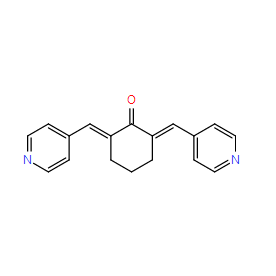| DC8333 |
SC-79
|
SC-79 is an activator of Akt; binds to the pleckstrin homology domain of Akt. |
| DC9273 |
SC-66
|
SC-66 is an allosteric inhibitor of Akt; interferes with pleckstrin homology domain binding to PIP3 and facilitates Akt ubiquitination. |
| DC7481 |
PHT427
|
PHT-427 is a dual Akt and PDPK1 inhibitor (high affinity binding for the PH domains of Akt and PDPK1) with Ki of 2.7 μM and 5.2 μM, respectively. |
| DC2021 |
Perifosine (KRX-0401)
|
Perifosine (KRX-0401) is a novel Akt inhibitor with IC50 of 4.7 μM. |
| DC7465 |
MK-2206 2HCl
|
MK-2206 2HCl is a highly selective inhibitor of Akt1/2/3 with IC50 of 8 nM/12 nM/65 nM, respectively; no inhibitory activities against 250 other protein kinases observed. Phase 2. |
| DC9335 |
AT7867
|
AT7867 is a potent ATP-competitive inhibitor of Akt1/2/3 and p70S6K/PKA with IC50 of 32 nM/17 nM/47 nM and 85 nM/20 nM, respectively; little activity outside the AGC kinase family. |
| DC8458 |
Akt Inhibitor VIII
|
Akt Inhibitor VIII is a cell-permeable quinoxaline compound that has been shown to potently, selectively, allosterically, and reversibly inhibit Akt1, Akt2, and Akt3 activity (IC50 = 58 nM, 210 nM, and 2.12 μM; respectively). |
| DC8411 |
Afuresertib
|
Afuresertib (GSK2110183) is a potent, orally bioavailable Akt inhibitor with Ki of 0.08 nM, 2 nM, and 2.6 nM for Akt1, Akt2, and Akt3, respectively. Phase 2. |
| DC7994 |
Afuresertib HCl
|
Afuresertib (GSK2110183) is a potent pan-AKT inhibitor that demonstrated synergy with bortezomib in preclinical models of multiple myeloma (MM). |






















